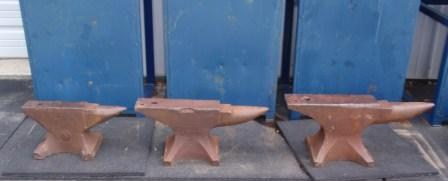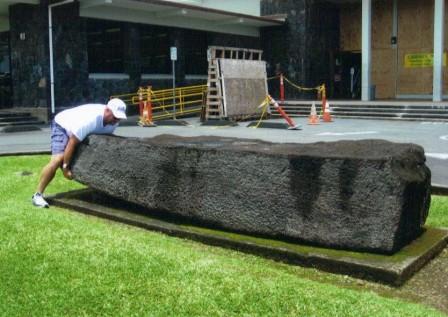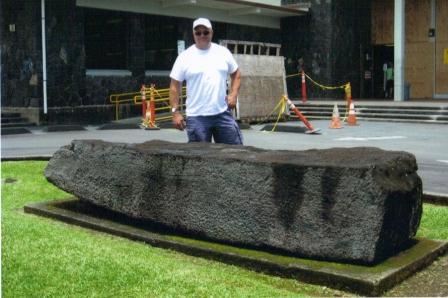
"It is a splendid exercise and showy feat to lie down and regain upright position holding a dumbbell overhead" - Thomas Inch
I recently received an email from Brian Brown, of Dubuque, Iowa asking the question – Why is the Turkish Get Up not an USAWA lift? Well – my answer was IT SHOULD BE!!!! This was a very popular lift among old-time strongmen. It was a favorite of such greats as Arthur Saxon, George Hackenschmidt, and Sig Klein. Thanks to Brian for providing this writeup about the Turkish Get Up.
The Turkish Get Up by Brian Brown
The Turkish Get Up is a great old-time strongman exercise in addition to being a great shoulder rehab, core building, and flexibility enhancing exercise. It also works all the muscles of the body, so it’s a great exercise to have in your arsenal in case you’re short of time for a workout.
In truth I don’t know what’s Turkish about the Get Up. I do know that you can do a Get Up with two hands or one hand. Typically the Turkish Get Up refers to the one-hand version of the Get Up. And you can use any kind of resistance you like, whether it be a dumbbell, kettlebell, barbell, sandbag, or your kid. I’ve tried it with my kids — it’s a great circus trick and they like it too!
To perform the Turkish Get Up, lie on your back with the weight overhead in one hand. While keeping your elbow locked and the weight overhead you ‘get up’ to a standing position. For competition purposes, this would be the end of the movement. But for training purposes, it’s more challenging if you then reverse the movement until you are lying back on the floor. Then you repeat for the other arm.
The basic sequence of the Turkish Get Up is as follows, to begin the movement, crunch your abs and obliques while moving the dumbbell slowly forward, then push off the floor with your free arm. If you can make it to the sitting position, you are pretty much home free! Then bring your leg opposite the weight underneath your body so that you are in a lunge position, then stand up with the weight.
There is another method whereby after you are in the sitting position, you get in the deep (seriously deep!) overhead squat position and stand up from there. But this is much more difficult than the ‘lunging’ method and requires quite a bit more flexibility and as such, less weight can be used.
Jeff Martone commented that the Turkish Get Up helped to rehab his bad shoulder. I’ve found this to be the case also. I had a delicate right shoulder from too much bench pressing and shot putting when I was in high school. When I discovered the Turkish Get Up a few years ago my shoulder problems disappeared. Also I have a friend with chronic back problems and he said that his back problems diminished remarkably after including the Turkish Get Up in his program. There is something unique to this movement in that the shoulders and hips seem to rotate around the axis underneath the weight, providing beneficial full range of motion.
I recommend sticking with low repetitions with this movement, unless you’re using it for a warm-up. Even with low reps, the Turkish Get Up can provide quite a metabolism boost. In the following video sequence I’m breaking my PR in the Turkish Get Up using 86.25 pounds (not bad for 6’2″, 188 lbs, and 36 years, if I don’t say so myself). Notice that I’m under the load for roughly 55 seconds. How many of these ‘singles’ do you think I could handle in a workout? I can almost get around a 400m track in that amount of time!
A nice, challenging, simple workout is to do the Turkish Get Up as described above, but to insert an overhead squat once you are in the standing position, then continue with the Turkish Get Up by reversing the movement to the floor, and repeating with the other arm. You could also insert a press once you are in the standing position. I also like to superset Turkish Get Ups with a heavy lower body movement like squats since I use dumbbells for the Turkish Get Up and my bar is free for another movement.
What type of resistance you prefer is up to you. Based upon my experience, a barbell is easier than a dumbbell due to the additional balance provided by the length of the bar. And a kettlebell is easier than a dumbbell because the kettlebell rides a bit lower on the arm. For me, it’s easier to get the dumbbell into position compared to a barbell or a kettlebell.
It is said that back in the day, weightlifters had to Turkish Get Up 100 pounds before they were allowed to learn the Olympic lifts. This exercise is also supposed to be a staple of cage-fighters. 100 pounds is my goal, but I’ll leave the cage fighting to the pros!







